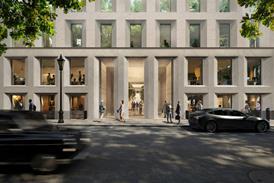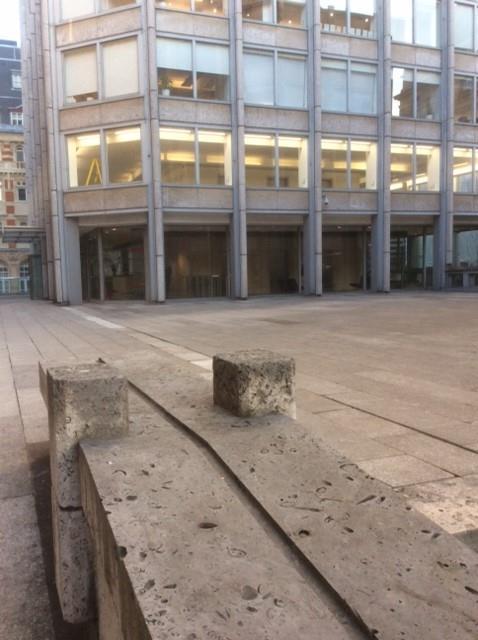Modern life is so hectic we need quiet public spaces between buildings where people can stop and think says Gillian Darley

There’s more than one way to skin a cat, as the old phrase has it. How should the space between buildings be used in city centres? It is a rare moment when land values and a hectic pattern of life do not conspire together to dictate the uses of the space around our feet in new developments. A seething interchange of people, routes, purposes and even goods can be exhilarating, but consider the alternative. A calm outdoor space through which you can walk at your own pace, or slow down to gain a sense of peace, is a rare enough feature in the city centre. It is wasteful, so the developer is bound to think. It is dull, so the skate-boarder or pavement artist might argue. It is pointless, so the majority, all so urgently busy, would say.
A calm outdoor space through which you can walk at your own pace, or slow down to gain a sense of peace, is a rare enough feature in the city centre
But for me, these oases of quietness are invaluable. A few weeks ago I found myself, as very often, near Piccadilly Circus, that hellish intersection in which there are no winners, neither vehicular nor pedestrian. But wandering down Lower Regent Street, something had changed. Between it and its easterly counterpart, the Haymarket, a sweep of beautiful stone paving has emerged following a lazy, loose, curve between the two parallel streets.
St James Market, as established in the 1660s, has had its share of good times and bad; by the 1850s, according to the Survey of London history, it was ‘very properly avoided by all persons who respected their characters or their garments’. The new St James Market is a broad brush reworking of old street patterns and offers, this time round, an elegant traffic-free pedestrian zone, paved to pick up the tone of the Portland stone used in Make’s (surprisingly subdued) new buildings, with a ribbon of darker stone woven in, here and there. Studio Weave designed the Pavilion, a changing cabinet of curiosities where you can stop and linger; this spring it’s become a ‘paper aviary’.
It is no surprise, perhaps, that the Crown Estate, whose development (with partners) this is, has decided to relocate its own head office here, for this is exemplary patronage. And who benefits? The Crown Estate is the ‘Sovereign’s public estate’ which means that although the monarch owns these ‘lands and holdings’ the revenues return to the nation, you and me, profits reverting to the Treasury.
The Economist Building has something of the same quality, as Ian Nairn remarked ‘the space between the buildings is a permanent gain.’ Somehow an echo of the quiet discretion of the businesses that still inhabit St James, Bury and Ryder streets particularly, where in unassuming upstairs premises invaluable art works are discussed, bought and sold, the Smithson’s Economist Building has recently changed hands. Its new American owner wants more commercial activity at ground level. The arguments are pinging to and fro about the detail of the current DSDHA proposals but I see the site as an invaluable breathing space, a tabula rasa in the overwritten urban fabric. I even part company with Ian Nairn who, in the 1960s, thought it could do with ‘some activity’ while the Twentieth Century Society (of which I’m President, to put my cards on the table) believes that it is already busy, hence justifying the extra elements. But in my experience, it remains unusually calm; no spilling café tables, no huddles of convivial drinkers, nothing orchestrated. It offers a break in your step, and even in your thinking, the antithesis to jostling Leicester Square or Piccadilly. Please leave us perambulators alone, to our own musings and our own space – so hard won in 2017.

















No comments yet